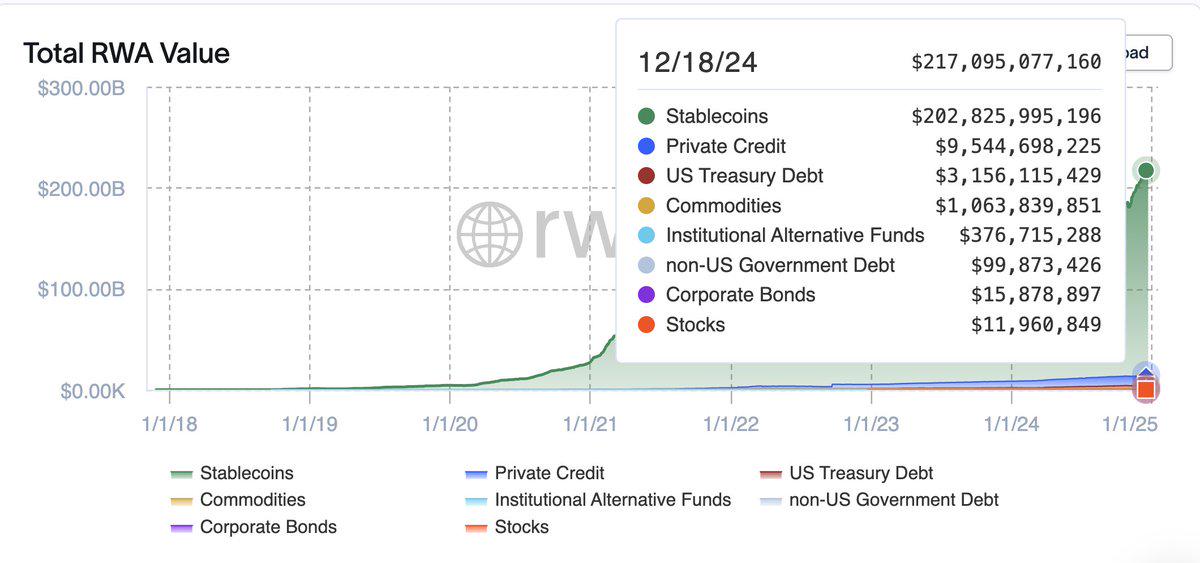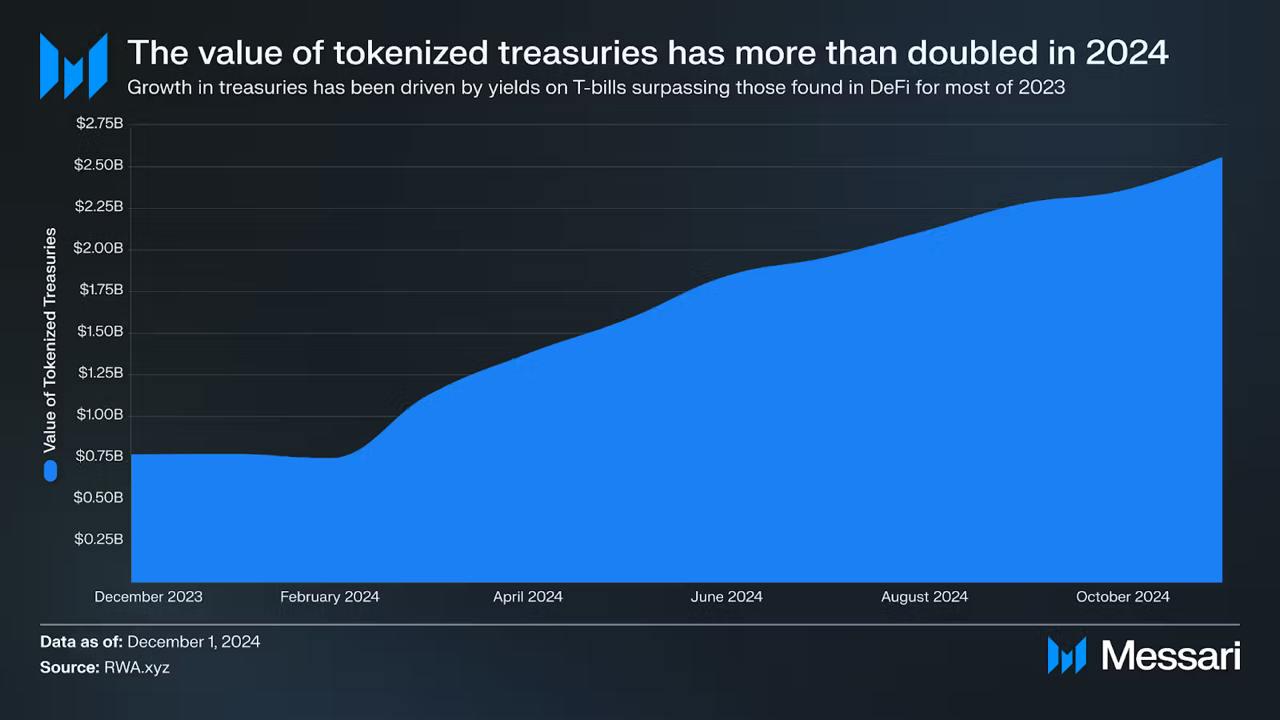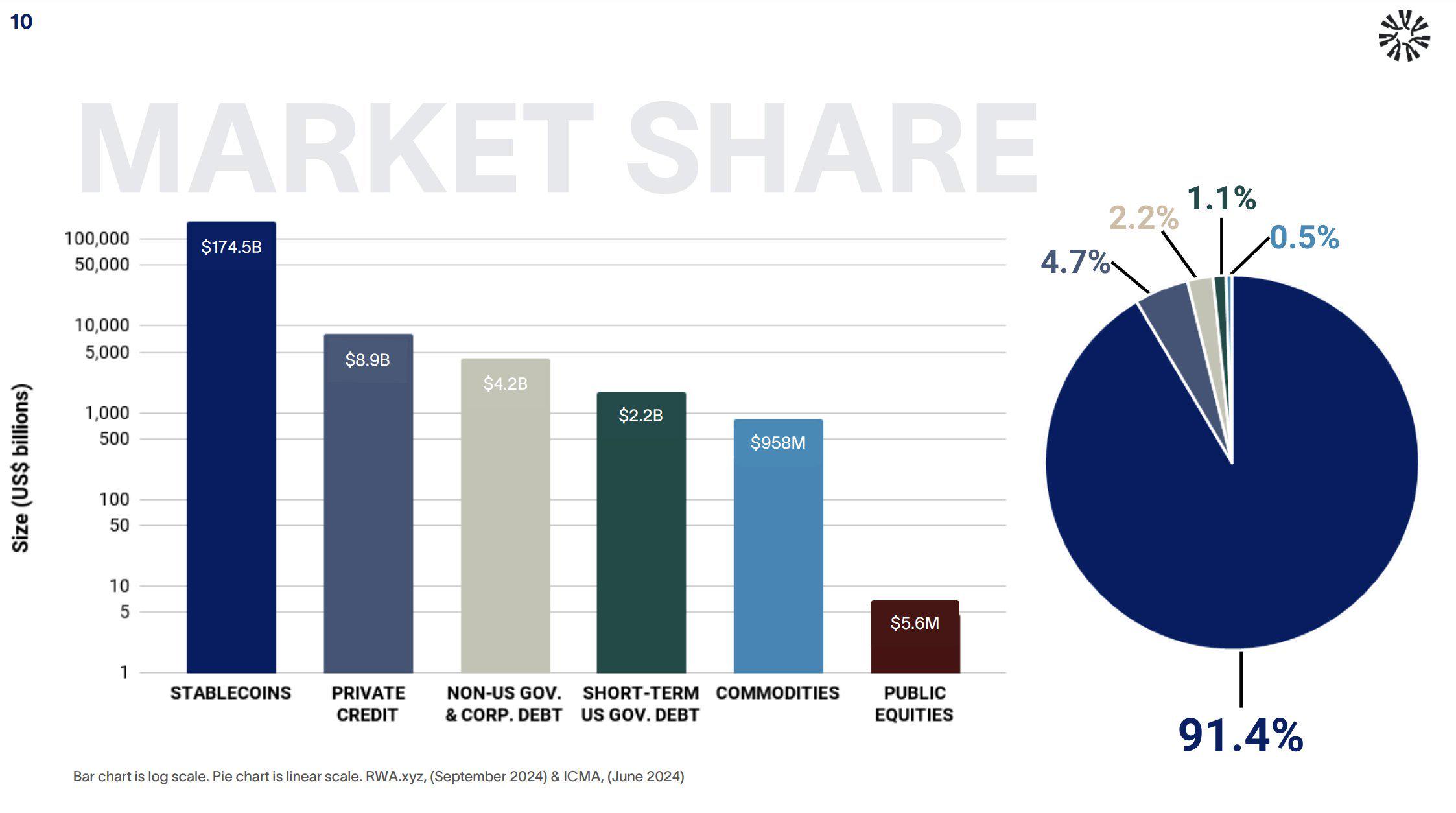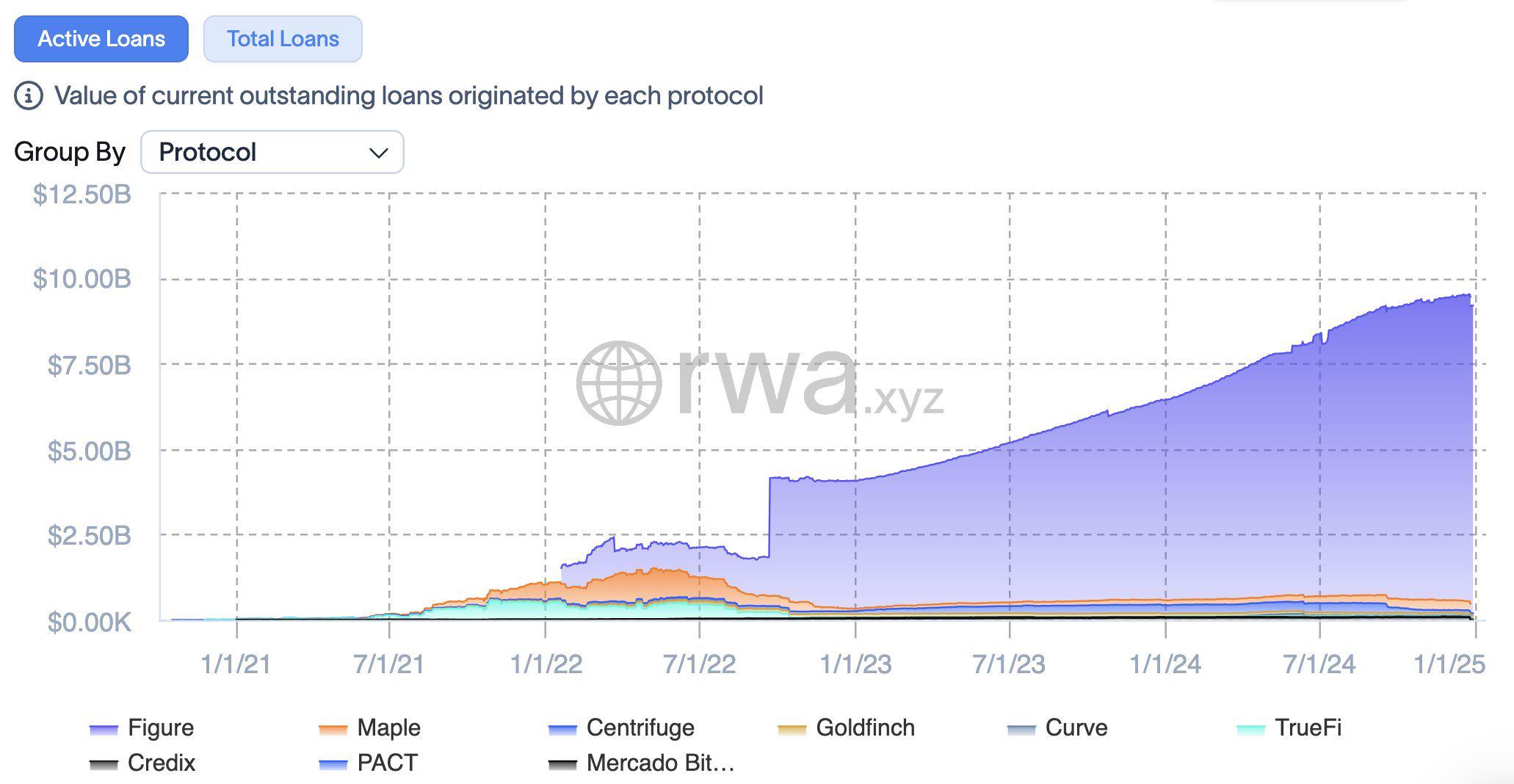Conclusive ThoughtsFirst
-
RWA covers a broad range of assets, but the most promising remain stablecoins, U.S. treasuries, and private credit.
-
The stablecoin market is dominated by three key players and is likely to stay that way.
-
U.S. treasury protocols mainly differ in fees and accessibility for retail investors, though reputation remains a critical factor.
-
A reduction in U.S. Fed interest rates will lower treasury yields, diminishing the incentive to hold new treasuries.
-
Despite this, U.S. treasury protocols continue to attract significant attention and funding.
-
Private credit models rely on attracting creditworthy businesses to minimize default rates.
-
Improving illiquidity and default repayment issues could position private credit as a key growth area within RWA.

So, what isRWAs?
RWAs (Real World Assets) refers to tokenizing real-world items like stablecoins, US treasuries, and private credit to bring them on-chain. This bridges traditional finance and decentralized finance, unlocking new opportunities for liquidity and accessibility.
Why Do RWAsMatter?
With a total value locked increasing from $2B to $9B(excluding the stablecoin market), merely a fraction of TradFi’s total assets, the growth potential for RWA is immense.
Tokenized assets like bonds, real estate, gold, and lending are just the beginning. Tokenization unlocks a global asset pool, democratizes investor access, and creates new revenue streams for issuers and intermediaries, paving the way for transformative opportunities in the financial ecosystem.

(Source: Messari)
How does Blockchain Improve Traditional RWAs?
RWAs unlock vast untapped markets for tokenization, offering:
Increased Liquidity: Traditional finance limits trading to set hours, but tokenized assets enable 24/7 trading, ensuring seamless transactions.
Fractional Ownership: Invest in high-value assets like real estate with fractional ownership.
Transparency: Auditing and token issuance post-asset custody ensure greater security and investor confidence.
Challenges FacingRWAs
While RWA offers a large market size and stable value, it still struggles with key challenges like low liquidity, limited transparency, and trading inefficiencies:
Regulatory Hurdles — Adhering to laws and regulations tied to tangible assets can be complex, with the risk of legal issues post-launch.
KYC Requirements — Both issuers and investors must undergo KYC to comply with AML/CFT standards, raising centralization concerns.
Custody & Security — Strong security measures are essential to ensure collateralized assets are safe and not misused.
Default Risks — Private credit within RWA carries significant default risk, unlike DeFi loans, which lenders can manage through overcollateralization.
Key Categories BreakDown

(Source: tokenizedassetcoalition.com)
1. Stablecoins


◇ The total MC of stablecoins reached $203.38B by the end of 2024.
◇ Held by 139.51M accounts globally.
◇ The majority of stablecoins are dominated by USDT and USDC, backed by USD, U.S. Treasury bills, and cash equivalents etc.
◇ While the market is smaller, algorithmic stablecoins, over-collateralized stablecoins, and tangible asset-backed stablecoins also play a role in the ecosystem.
2. Private Credit

◇ The total value of active loans stands at $9.49B, with a cumulative loan value of $16.23B.
◇ Unlike the over-collateralized lending structure in DeFi, private credit protocols provide collateralized lending.
◇ Deliver yields comparable to, or even better than, those in TradFi and, in some cases, DeFi.
◇ Make borrowing easier for businesses while offering lenders better rates compared to traditional banks.
◇ Act as intermediaries, the protocols connect external companies seeking funds with crypto lenders.
Pros:
-
Senior Pool APY offers higher yields than many DeFi and UST options.
-
Loan counterparties are typically vetted, well-established companies.
Cons:
-
Repayment issues from counterparties can lead to defaults, impacting yields and causing potential losses.
-
Low liquidity makes exiting private credit pools challenging.
-
Default management by junior pool investors lacks transparency for general users.
3. Treasury/bonds
◇ The total value of treasury and bonds are 116.45B.
◇ U.S. T-Bills dominate the treasury market, backed by the U.S. government’s guarantee of interest and principal repayment.
◇ Bonds from other countries exist but are less traded and less liquid.
◇ Gained popularity in 2022 and early 2023 due to rising U.S. Fed interest rates.
◇ The high-interest environment, coupled with the crypto bear market, offered competitive yields.
4. Commodities
◇ The MC of commodities is $1.05B.
◇ Monthly Transfer Volume of commodities is $263.34M.
◇ Mostly dominated by gold, with other types like oil, metals, and uranium also included.
Pros:
1. Enables on-chain access to gold products.
Cons:
-
Apart from gold, other on-chain commodities are not widely adopted by traders.
-
Low liquidity and trading volume make some commodities susceptible to price manipulation.
5. Real Estate
Pros:
1. Allows smaller investors access to high-value assets via blockchain.
Cons:
-
Most platforms have high entry barriers, like Propy as a listing platform or Tangible requiring pledged property.
-
Low liquidity limits trading opportunities for tokenized RWAs.













